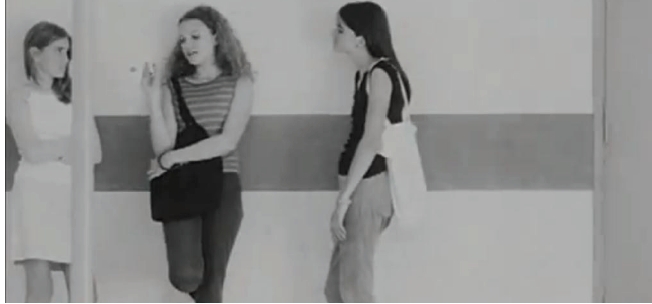Directors show promise in debut works
Short films play a large role in the career of directors
Shot on 16-millimeter film, Coppola’s debut, “Lick the Star” captures the nostalgia of the 90s as well as preteen suburban life.
February 10, 2022
Short films are often forgotten, yet they are an art-filled format. Short films may feel too brief to be taken seriously, but they often pack more of a punch than many feature-length films.
Because they are not weighed down by corporate studio pressures to maximize audience reach and profit, short films allow directors to take more experimental liberties and freely express their personal vision.
Many well-known directors — like Sofia Coppola, Tim Burton and Wes Anderson — started by creating short films and submitting them to film festivals such as Sundance and Tribeca. I wanted to share with you some of the most disorienting, riotous and existential-crisis-inducing short films I have ever seen. You may not have heard of any of them, but if you give them a chance, I can assure you that they will leave you feeling stimulated, surprised and oh-so glad you experienced them.
Coppola, known for “The Virgin Suicides”, “The Bling Ring” and for being the only daughter of critically acclaimed director Francis Ford Coppola, has made a name for herself as a successful director. Yes, nepotism may have played a role in young Coppola’s success, but she has demonstrated her unique filmmaking style through her first-ever film: “Lick the Star”.
The short film follows a group of suburban middle schoolers navigating their preteen years, making decisions influenced by books such as “Flowers in the Attic”. The story follows the main group as they devise a plan to poison boys in school with arsenic. “Kill the Rats” backward resembles “Lick the Star,” hence, the group’s clever codename. The black-and-white 90s aesthetic of the film is overlaid with punk music by bands such as The Go-Go’s. The film evokes feelings of nostalgia as it hones in on the inner workings of a suburban middle school where cliques reign supreme. Its low-budget appearance actually plays a role in its emotional impact on the viewer. The film showcases the beginning of Coppola’s unique and edgy style which is later featured in her full-length films.
Burton is a filmmaker known for his distinctive gothic animation style and live-action films such as “The Nightmare Before Christmas” and “Beetlejuice”. You may have heard of the 2012 animated film “Frankenweenie”, but did you know it started out as one of Burton’s debut films in 1984? With actors such as Shelley Duval and Daniel Stern — as well as a distinctive black-and-white-coloration — this short film is a blueprint of Burton’s future success.
The film follows a young boy whose dog recently died. Frankenstein has the brilliant idea to try and bring his dead dog back to life. Little does he know that this will trigger mayhem in his small, suburban town. This short film was originally commissioned by Disney, but they later removed themselves from the project due to Burton’s eerie and not-so-child-friendly content and style. After Burton worked on successful ‘PG’ projects such as “Pee-Wee Herman’s Big Adventure” and “Beetlejuice”, Disney allowed his initial short film to be shown on the “Nightmare Before Christmas” DVD in 1992.
Anderson is another filmmaker with a very distinctive style that embraces symmetrical and pastel-clad cinematography. Anderson is best known for films such as “Moonrise Kingdom” and “Fantastic Mr. Fox”. Anderson, like many filmmakers, casts the same actors in many of his films. Anderson and Owen Wilson — one of his frequently employed actors — met in a playwriting class in college. The pair actually banded together to write and create Anderson’s first-ever short film: “Bottle Rocket” (1994), which later became a feature-length film in 1996. The film, like others I have mentioned, is rendered in black-and-white, evokes feelings of nostalgia and simplicity while simultaneously drawing focus to the characters and plot. The story centers on two friends who are plotting a crime spree. The stars of this film are not unfamiliar to many Anderson fans: Wilson, as aforementioned, and the actor Luke Wilson. This film, unlike other Anderson films, is driven mainly by dialogue. There are a few close-ups, some dramatic shots and a jazzy soundtrack, but the quintessential Anderson style and color are absent. The film was submitted to Sundance, but it did not win any awards. Regardless of this defeat, Anderson’s career was launched after this film was released as a feature film in 1996.














